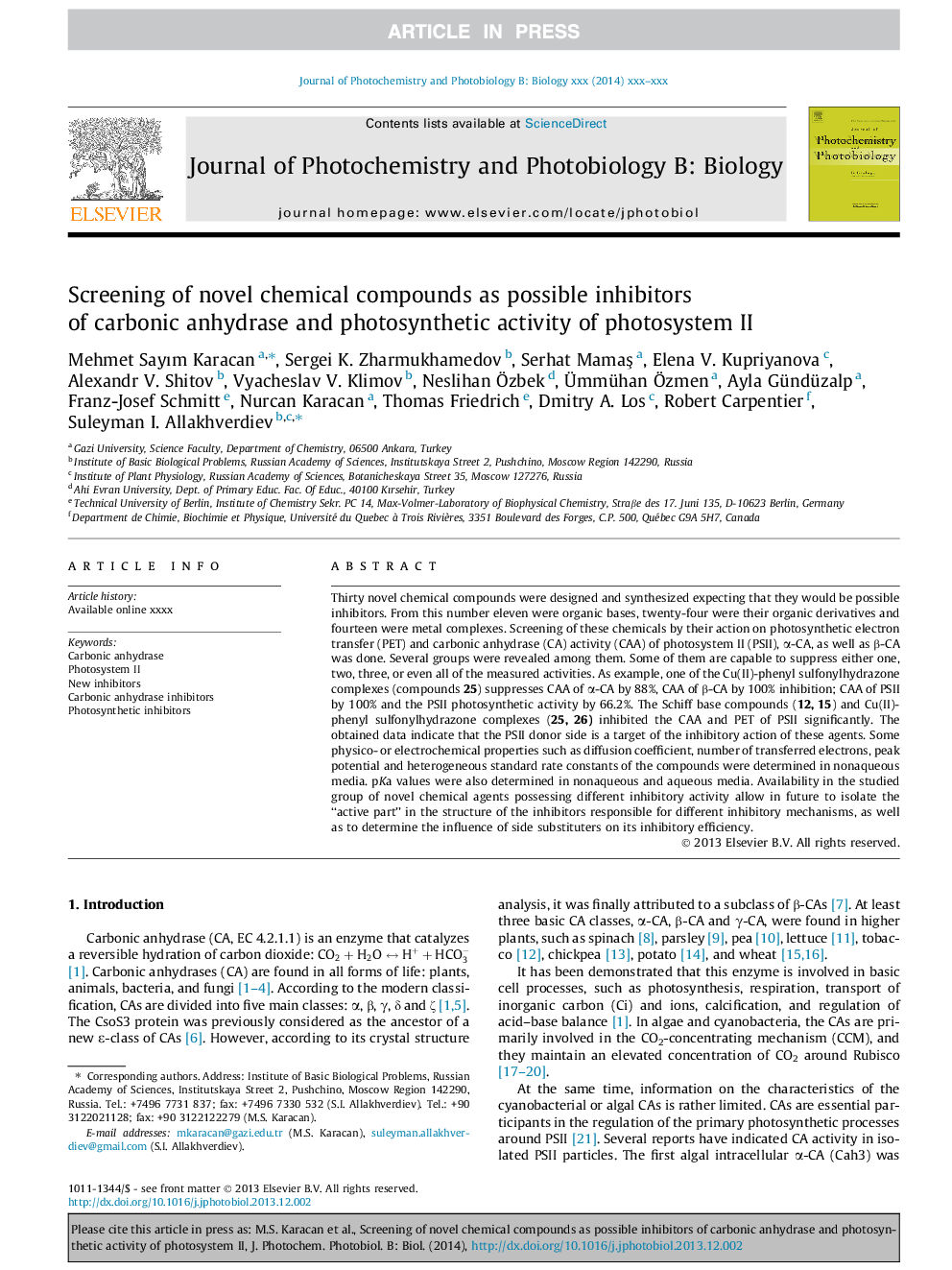| Article ID | Journal | Published Year | Pages | File Type |
|---|---|---|---|---|
| 6493922 | Journal of Photochemistry and Photobiology B: Biology | 2014 | 12 Pages |
Abstract
Thirty novel chemical compounds were designed and synthesized expecting that they would be possible inhibitors. From this number eleven were organic bases, twenty-four were their organic derivatives and fourteen were metal complexes. Screening of these chemicals by their action on photosynthetic electron transfer (PET) and carbonic anhydrase (CA) activity (CAA) of photosystem II (PSII), α-CA, as well as β-CA was done. Several groups were revealed among them. Some of them are capable to suppress either one, two, three, or even all of the measured activities. As example, one of the Cu(II)-phenyl sulfonylhydrazone complexes (compound 25) suppresses CAA of α-CA by 88%, CAA of β-CA by 100% inhibition; CAA of PSII by 100% and the PSII photosynthetic activity by 66.2%. The Schiff base compounds (12, 15) and Cu(II)-phenyl sulfonylhydrazone complexes (25, 26) inhibited the CAA and PET of PSII significantly. The obtained data indicate that the PSII donor side is a target of the inhibitory action of these agents. Some physico- or electrochemical properties such as diffusion coefficient, number of transferred electrons, peak potential and heterogeneous standard rate constants of the compounds were determined in nonaqueous media. pKa values were also determined in nonaqueous and aqueous media. Availability in the studied group of novel chemical agents possessing different inhibitory activity allow in future to isolate the “active part” in the structure of the inhibitors responsible for different inhibitory mechanisms, as well as to determine the influence of side substituters on its inhibitory efficiency.
Related Topics
Physical Sciences and Engineering
Chemical Engineering
Bioengineering
Authors
Mehmet Sayım Karacan, Sergei K. Zharmukhamedov, Serhat MamaÅ, Elena V. Kupriyanova, Alexandr V. Shitov, Vyacheslav V. Klimov, Neslihan Ãzbek, Ãmmühan Ãzmen, Ayla Gündüzalp, Franz-Josef Schmitt, Nurcan Karacan, Thomas Friedrich, Dmitry A. Los,
